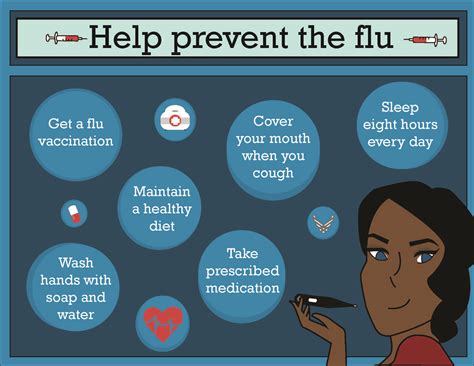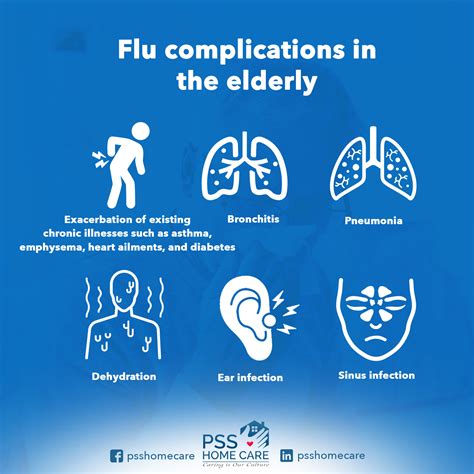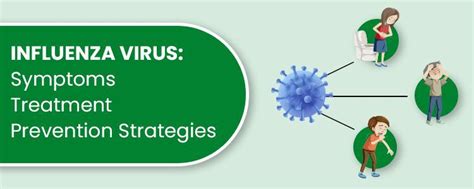Intro
Discover 5 crucial flu virus facts, including transmission, symptoms, and prevention methods, to protect against influenza and seasonal flu outbreaks, and learn about vaccine effectiveness.
The flu, also known as influenza, is a highly contagious respiratory illness caused by the flu virus. It can cause mild to severe illness, and in some cases, it can lead to death. The flu virus is a major public health concern, and it's essential to understand the facts about it to protect yourself and your loved ones. With the flu season approaching, it's crucial to separate fact from fiction and get vaccinated to prevent the spread of the virus.
The flu virus is a complex and constantly evolving virus, and there are many misconceptions surrounding it. Some people believe that the flu is just a minor illness, while others think that it's only contagious when symptoms are present. However, the flu virus is a serious illness that can cause significant morbidity and mortality, especially in high-risk groups such as the elderly, young children, and people with underlying health conditions. By understanding the facts about the flu virus, you can take the necessary steps to protect yourself and your community from the spread of the virus.
The flu virus is a significant public health concern, and it's essential to stay informed about the latest developments and research on the virus. The Centers for Disease Control and Prevention (CDC) and the World Health Organization (WHO) are two reputable sources of information on the flu virus, and they provide updates on the latest flu outbreaks, vaccination recommendations, and prevention strategies. By staying informed and taking the necessary precautions, you can reduce your risk of getting the flu and prevent the spread of the virus to others.
What is the Flu Virus?

How is the Flu Virus Transmitted?
The flu virus is highly contagious and can be transmitted through the air when an infected person talks, coughs, or sneezes. The virus can also be transmitted through contact with contaminated surfaces or objects. People with the flu can be contagious for up to 24 hours before symptoms appear and up to 5-7 days after symptoms appear. The flu virus can also be transmitted through close contact with an infected person, such as shaking hands or sharing food and drinks.Flu Virus Symptoms

Who is at Risk for the Flu Virus?
Certain groups of people are at higher risk for the flu virus, including older adults, young children, pregnant women, and people with underlying health conditions such as heart disease, lung disease, and diabetes. These groups are more susceptible to the flu virus because their immune systems are weaker, making it harder for them to fight off the infection. People who are at high risk for the flu virus should take extra precautions to prevent the spread of the virus, such as getting vaccinated and practicing good hygiene.Prevention and Treatment

Flu Vaccine Effectiveness
The effectiveness of the flu vaccine can vary from year to year, depending on the match between the vaccine and the circulating flu viruses. When the vaccine is well-matched to the circulating flu viruses, it can be up to 60% effective in preventing the flu. However, when the vaccine is not well-matched, it can be less effective. Despite its limitations, the flu vaccine is still the best way to prevent the flu virus, and it's essential to get vaccinated every year to protect yourself and your community.Complications of the Flu Virus

Flu Virus Treatment
The treatment for the flu virus typically involves rest, hydration, and over-the-counter medications to relieve symptoms. In some cases, antiviral medications such as oseltamivir (Tamiflu) and zanamivir (Relenza) may be prescribed to treat the flu virus. These medications can help shorten the duration and severity of the flu, but they must be started within 48 hours of symptom onset to be effective.Flu Virus Outbreaks

Flu Virus Pandemics
A flu pandemic occurs when a new flu virus emerges that can spread easily from person to person, and it can cause significant illness and death worldwide. The flu virus can cause pandemics because it's highly contagious and can spread quickly around the world. The World Health Organization (WHO) and the Centers for Disease Control and Prevention (CDC) closely monitor the flu virus and provide updates on the latest flu outbreaks and pandemics.Conclusion and Next Steps

What is the flu virus?
+The flu virus is a type of RNA virus that belongs to the Orthomyxoviridae family. There are three main types of flu viruses: A, B, and C.
How is the flu virus transmitted?
+The flu virus is highly contagious and can be transmitted through the air when an infected person talks, coughs, or sneezes. The virus can also be transmitted through contact with contaminated surfaces or objects.
Who is at risk for the flu virus?
+Certain groups of people are at higher risk for the flu virus, including older adults, young children, pregnant women, and people with underlying health conditions such as heart disease, lung disease, and diabetes.
How can I prevent the flu virus?
+The best way to prevent the flu virus is to get vaccinated every year. You can also practice good hygiene, such as washing your hands frequently and avoiding close contact with people who are sick.
What are the symptoms of the flu virus?
+The symptoms of the flu virus can range from mild to severe and can include fever, chills, cough, sore throat, runny or stuffy nose, muscle or body aches, headaches, fatigue, and diarrhea and vomiting.
We hope this article has provided you with a comprehensive understanding of the flu virus and its prevention. If you have any further questions or concerns, please don't hesitate to reach out to us. Share this article with your friends and family to help spread awareness about the flu virus and its prevention. Together, we can work towards a healthier and safer community.
